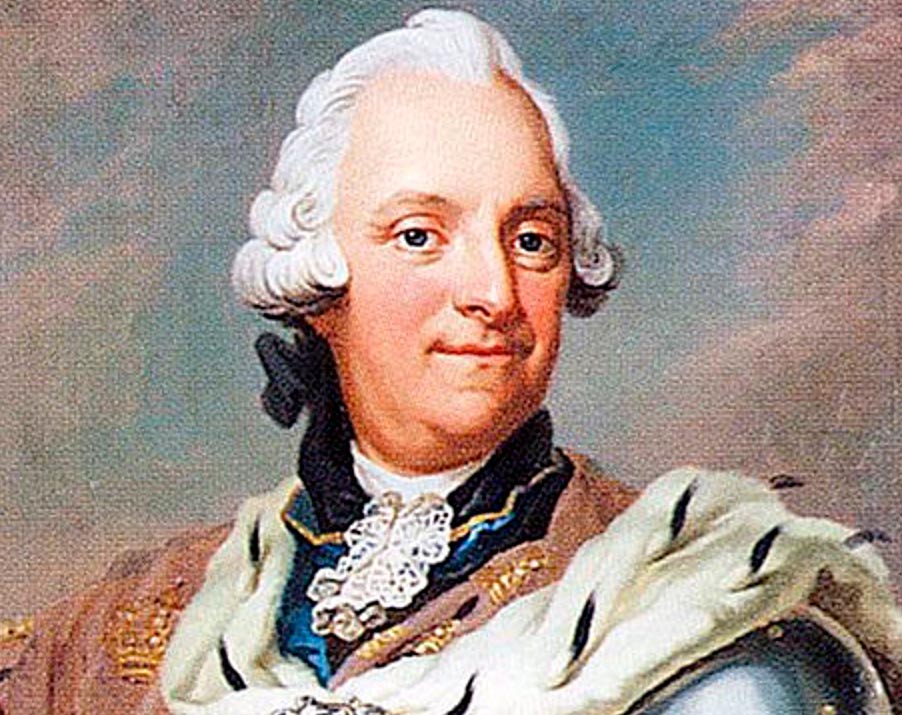Adolf Frederick: The Swedish King Who Ate Himself to Death
Adolf Frederick was a Swedish king who lived during the 18 th century. Although Adolf Frederick ruled Sweden for almost 20 years, it was unremarkable and nothing of great note took place during his long reign. Instead, Adolf Frederick’s (dubious) claim to fame lies in the manner of his death. The Swedish monarch is often nicknamed ‘the king who ate himself to death’, as he is reported to have died after overeating.
Adolf Frederick’s Early Life
Adolf Frederick was born on the 14 th of May 1710, in Gottorp, Schleswig, Germany. His father was Christian Augustus of Holstein-Gottorp-Eutin, who belonged to the House of Holstein-Gottorp, while his mother was Albertina Frederica of Baden-Durlach. As a younger son, Christian Augustus did not inherit the Duchy of Holstein-Gottorp, which went to his older brother, Frederick IV. Christian Augustus was given the fiefdom of Eutin, as well as the Prince-Bishopric of Lübeck.

Christian August of Holstein-Gottorp, Prince of Eutin. (Der Bischof mit der E-Gitarre / Public Domain)
Adolf Frederick himself was a younger son and was probably not expected to inherit his father’s titles. Indeed, when Christian Augustus died in 1726, he was succeeded by Charles Augustus, his eldest son. Charles Augustus died in the following year, and as he was childless, was succeeded by Adolf Frederick.
Adolf Frederick As a Figurehead
Adolf Frederick would have remained a minor German noble, had it not been for Elizabeth, the Empress of Russia. During the Russo–Swedish War, which lasted from 1741 to 1743, the Swedes were defeated by the Russians and were forced to sign the Treaty of Åbo. One of the major causes of the war was Sweden’s desire to re-take Finland, which was occupied by Russia following the Great Northern War. Threatening to annex Finland, Elizabeth was able to force the Swedes to elect Adolf Frederick as the heir to the Swedish throne.
- Christina, The Minerva of the North Who Abdicated Her Throne to Live Life by Her Own Rules
- A Toxic Price to Pay: Wealthy citizens in medieval Europe had poisoning from lead-glazed plates
- Even in Viking Times Norway was Famous for its ‘White Gold’… a ‘Gold’ You can Eat!

Elizabeth the Empress of Russia. (Shakko / Public Domain)
When the Swedish king, Frederick I, died in 1751, Adolf Frederick became the new king. He was, however, only a figurehead, as real power was concentrated in the hands of the Riksdag (the Swedish Parliament). Adolf Frederick was not content with this state of affairs, and on two occasions, the king tried to seize power from the Riksdag. His first attempt, known as the Coup of 1756, was masterminded by the queen, Louisa Ulrika (the sister of Prussia’s Frederick the Great). The conspirators planned to abolish the Riksdag and install Adolf Frederick as an absolute monarch. The plot, however, was discovered. As a consequence, several confidants of the royal family were executed, and Adolf Frederick nearly lost the throne himself.
Adolf Frederick Tries to Seize Power Again
The second opportunity to seize power came in 1768. In the so-called December Crisis, Adolf Frederick decided against signing certain state documents and formally resigned as king, making use of what little power he had. With the guidance of his son, Gustav (who later became King of Sweden as Gustav III), the king succeeded in scoring a small victory.
In order to avert the crisis, the Riksdag assembled on the 20 th of December 1768 and promised to institute reforms that would increase the king’s powers. The king agreed to retake the throne, therefore bringing the crisis to an end. The Riksdag assembled again during the following year and the only reform that was made was to increase the king’s income. The king’s actions, however, caused the Cap party (which was generally pro-Russian and pro-Prussian) to lose power in the Riksdag and brought their rival, the Hats party (which was pro-French, and pursued a more aggressive foreign policy), back to power.
Adolf Frederick died on the 12 th of February 1771, at the age of 60. The day of his death was Fettisdagen (literally meaning ‘Fat Tuesday’), the Swedish equivalent of Shrove Tuesday. As the following day would have been the beginning of Lent, the king had a huge meal the night before. It is reported that the king feasted on lobsters, caviar, sauerkraut, kippers, and champagne. Additionally, the king devoured 14 servings of semla, a sweet roll filled with cream traditionally eaten in Sweden on Fettisdagen. Adolf Frederick died shortly after this sumptuous last meal and it is often thought that it was the dessert that caused his death.

Swedish semla Lenten bun. (Emmoth / Adobe)
Top image: Portrait of Adolf Frederick of Sweden. Source: TRAJAN 117 / Public Domain.
By Ḏḥwty
References
Elizabeth, P., 2014. Here’s The Story Of King Frederick, Better Known As The Ruler Who Ate Himself To Death. [Online] Available at: https://www.scoopwhoop.com/Heres-The-Story-Of-King-Frederick-Better-Known-As-The-Ruler-Who-Ate-Himself-To-Death/#.kqn75l092
Flantzer, S., 2017. King Adolf Frederik of Sweden. [Online] Available at: http://www.unofficialroyalty.com/king-adolf-frederik-of-sweden/
history.info, 2019. 1771: King Adolf Frederick of Sweden Died of Overeating?. [Online] Available at: https://history.info/on-this-day/1771-king-adolf-frederick-sweden-died-overeating/
Kelly, L., 2018. The King Who Ate Himself To Death. [Online] Available at: https://www.history101.com/love-food-king-adolf-frederick/
The Editors of Encyclopaedia Britannica, 2019. Adolf Frederick. [Online] Available at: https://www.britannica.com/biography/Adolf-Frederick
www.masonrytoday.com, 2019. Today in Masonic History: Adolf Frederick is Born. [Online] Available at: https://www.masonrytoday.com/index.php?new_month=5&new_day=14&new_year=2016

















